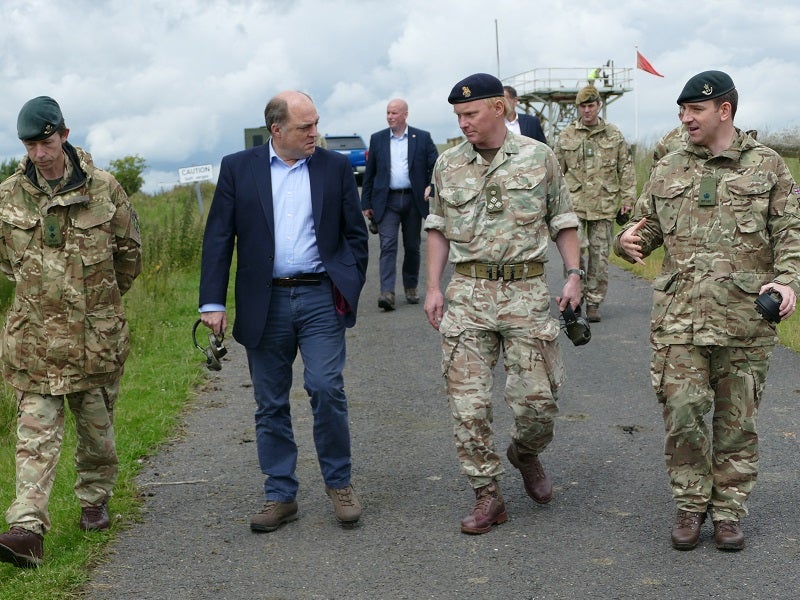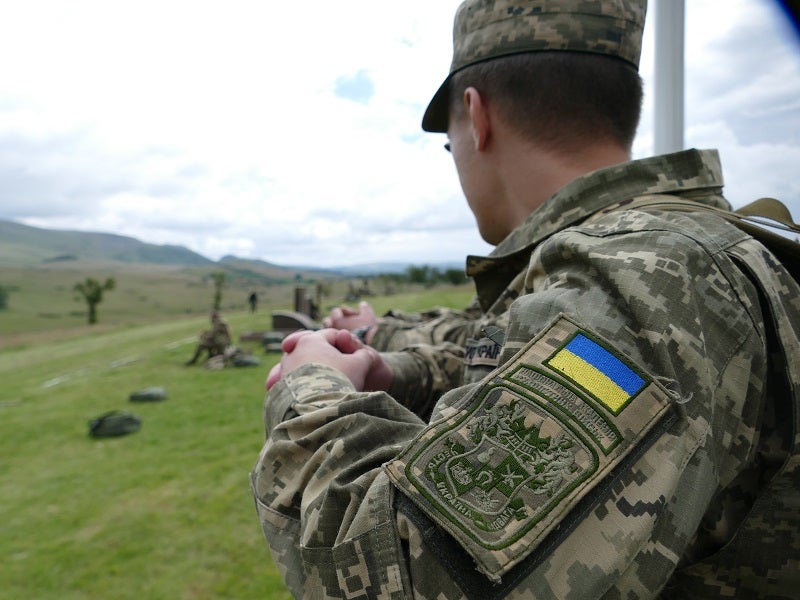
The decision by Ben Wallace, current UK Secretary of State for Defence, to not launch a bid to become the next leader of the Conservative Party and, in doing so, the 56th Prime Minister of the UK, will be welcomed by defence watchers as an opportunity to maintain consistency in a cabinet position that until recently had become a byword for career short-termism.
Since the Conservative Party’s return to power in 2010, initially in a coalition government with the Liberal Democrats and subsequently either as a majority or a supply and favour with Northern Ireland’s Democratic Unionists, there have been six different holders of the position, the longest stretch of which was nearly 40 months, with shortest coming in at less than three months.
As of 11 July, Ben Wallace has been in office for nearly 36 months since being made defence secretary in July 2019. Prior to Wallace, Penny Mordaunt, current Minister of State for Trade Policy, held the position for two months and 23 days, with Gavin Williamson serving for just short of 18 months between 2017 and 2019.
For Wallace, who has been at the helm during two of the most significant UK military events since combat operations in Iraq and Afghanistan ended (the Kabul Airlift, also known as Operation Pitting, and the ongoing response to Russia’s invasion of neighbouring Ukraine), it appears that the decision has been taken to prioritise his current work over becoming Prime Minister and, perhaps, personal ambition.
“After careful consideration and discussing with colleagues and family, I have taken the decision not to enter the contest for leadership of the Conservative Party. I am very grateful to all my parliamentary colleagues and wider members who have pledged support,” Wallace posted on social media on 9 July.
Continuing, Wallace said: “It has not been an easy choice to make, but my focus is on my current job and keeping this great country safe. I wish the very best of luck to all candidates and hope we swiftly return to focusing on the issues that we are all elected to address.”
After the insurgency
Wallace’s time as Defence Secretary has been spent reshaping a UK military that had emerged from two decades of counter-insurgency operations, with the country trying to find a home for itself in the emerging new world order being created by China and Russia and the ongoing difficulties of Brexit.
Amid a multi-billion-pound fiscal black hole at the Ministry of Defence, Wallace has sought to force the services to make specific decisions about sunsetting some capabilities and focus around delivering numerically smaller forces for deployments but ensure that personnel and platforms are able to provide the ground, sea, or air effect required. To this end, the 2021 Defence Command Paper, which followed the wider governmental Integrated Review, was created in a bid to provide direction to the UK’s military in the years ahead.
The document, written before Russia’s renewed invasion of Ukraine, would see the British Army reduce to around 72,000 full-time personnel, augmented with more effective use of the reserves. At present, the British Army numbers around 78,000, or 81,000 if those in training are counted, with Wallace stating that the new aim would be for a full-time strength of 73,000 personnel.

The Warrior Capability Sustainment Plan was scrapped as the Boxer eight-wheeled armoured personnel carrier was selected to equip the country’s mechanised infantry units. The Challenger 2 main battle tank would also be upgraded to the Challenger 3 variant, featuring improved power packs and a new turret fitted with a 120mm smoothbore gun, ending the UK’s virtually exclusive use of rifled barrels and better aligning with NATO standards.
In the emergent lessons from the Ukraine-Russia war, it is likely that increase investment will be made in long-range fires, mobile air defence and uncrewed systems.
“The lessons of Ukraine is [that] our deep fires, our electronic warfare, our air defence, are deeply inadequate and we need to invest in those areas,” Wallace told the UK’s Defence Committee during a 5 July hearing.
At sea, by air
In the naval domain, Wallace has sought to wrestle back vast overspends on warships and huge delays in programme delivery schedules, although to mixed success. The landmark Type 26 frigate programme is still late; the first vessel (HMS Glasgow) will not reach initial operational capability until 2028, even as the first of the Type 23 vessels which they will replace already beginning to leave service. Delays are also likely to follow on ship two, with the programme potentially coming back on track by ship three and the end of the first order batch.
In the air, long-serving fleets such as the C-130J tactical transporter are due to be retired from service ahead of schedule, a sacrifice deemed necessary in order to enable the Royal Air Force to invest in programmes such as the F-35 fifth-generation stealth fighter, and other acquisitions such as the reduced purchase of E-7 Wedgetail airborne early warning aircraft and P-8 Poseidon anti-submarine warfare platforms.
In addition, the UK has to try and maintain its military aerospace industry, led by defence primes such as BAE Systems and Rolls-Royce, through the Tempest sixth-generation fighter programme, intended to deliver a first flight in the almost unrealisable timeframe of 2035.
In space, with the UK’s inaugural Space Command coming online earlier this year, the focus will be to determine how the country operates in a sector that is becoming as contested in the celestial sphere and it is in the terrestrial domains.
Support for Ukraine
And finally, there is the UK’s contributions to the Ukrainian war effort, which will now also take the lead in a military training programme intended to train up to 10,000 Ukrainian military personnel over the coming months. According to the MoD around 1,050 UK service personnel are deploying to run the training programme, which will take place at sites across the country.
Based on the UK’s basic soldier training, the course covers weapons handling, battlefield first aid, fieldcraft, patrol tactics and the Law of Armed Conflict. The government has rapidly procured AK variant assault rifles for the training programme, meaning Ukrainian soldiers can train on the weapons they will be using on the front line.
In financial terms, the UK has committed more than £2.3bn ($2.77bn) in military aid, including more than 5,000 NLAW anti-tank weapons and M270 multiple launch rocket systems, second only to the US by quantitative metrics.
Wallace has then set his stall out to, rather than becoming the 56th Prime Minister of the UK, be the indispensable figurehead of the Ministry of Defence, charged with bringing the country’s military into the modern age, amid all the challenges of a Neo-Imperial Russia, and Chinese hegemony in the east.
Time will tell as to whether this decision will be proved right.




